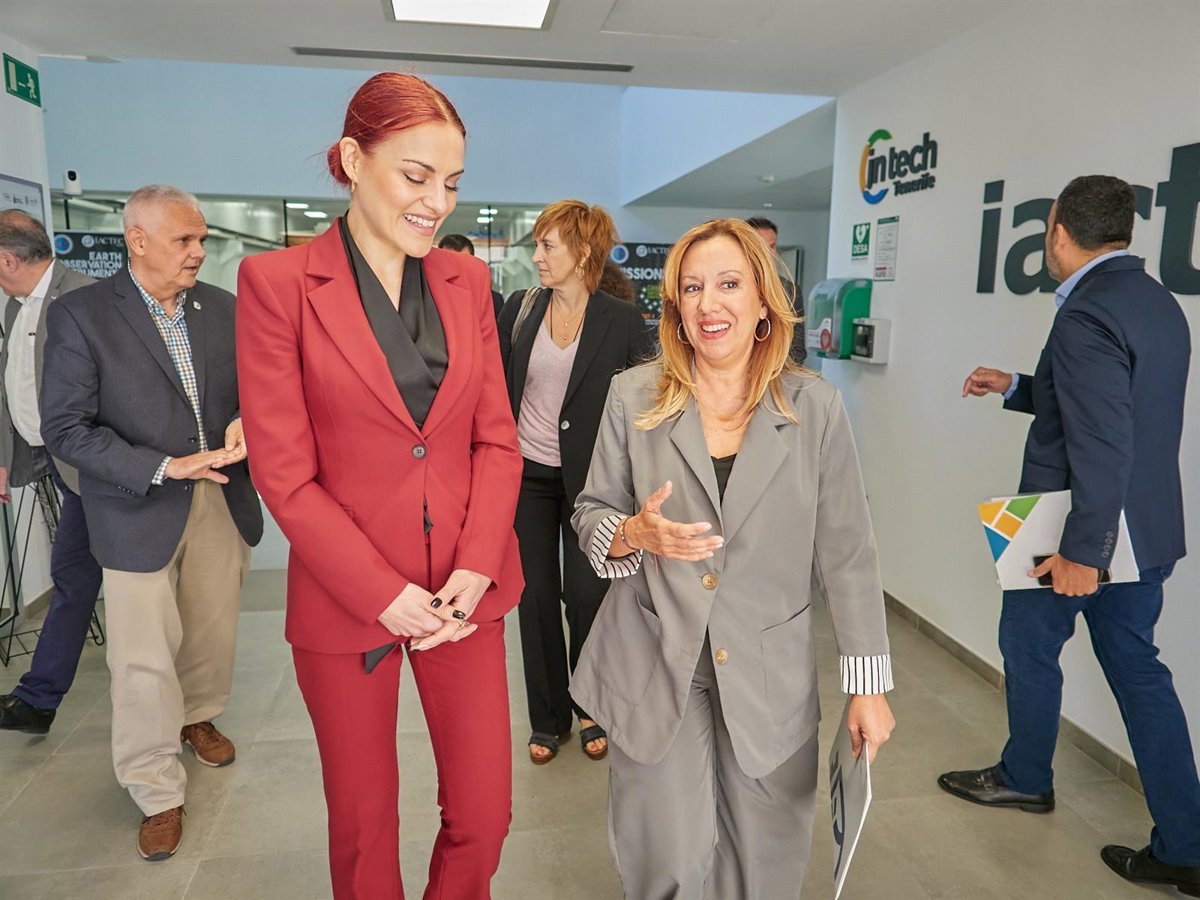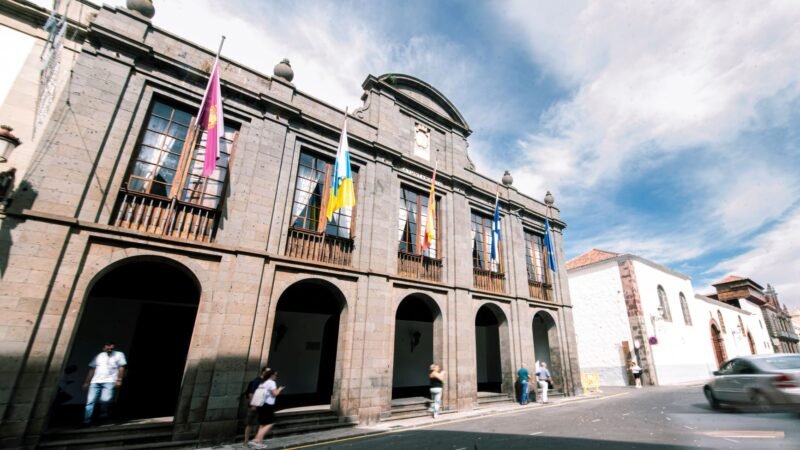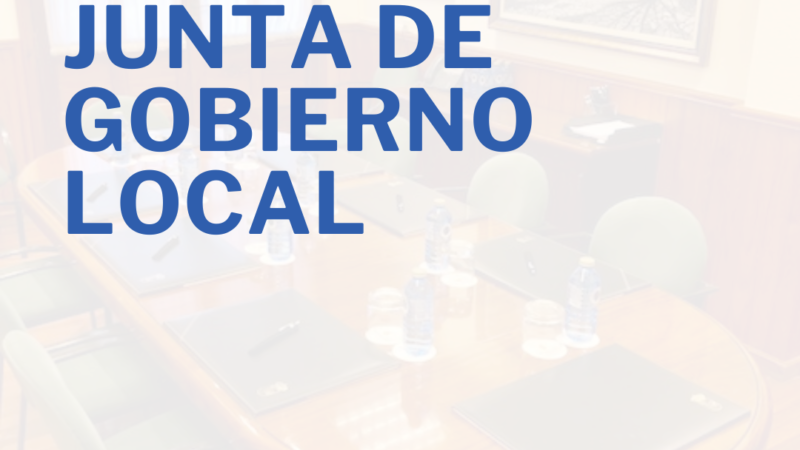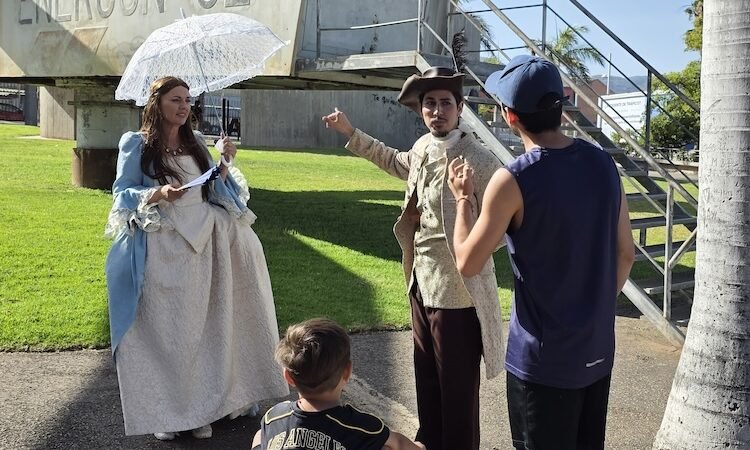La first phase will cover the islands of the western province and will focus on managing climate change and preventing emergencies
LA LAGUNA (TENERIFE), 24 (EUROPA PRESS)
President of the Cabildo de Tenerife, Rosa Dávila, presented on Tuesday the project ‘Constelación Islas Canarias’, a pioneering initiative promoted in conjunction with the Instituto Astrofísico de Canarias (IAC) that includes the design, manufacture, and launch of a network of small satellites that will daily observe the islands of Tenerife, La Palma, La Gomera, and El Hierro.
With an estimated investment of 20 million euros, this constellation will generate key data to anticipate climate change, better manage natural resources, and improve the response to emergencies such as fires, spills, or extreme events.
The event, held at the IACTEC building, was attended by the Director of Programs and Industry of the Spanish Space Agency, Cecilia Hernández, and the astronaut and molecular biologist Sara García.
Also in attendance were the Director of the Instituto de Astrofísica de Canarias (IAC), Valentín Martínez-Pillet; the Director General of Organic Coordination and Strategic Projects of the Government of the Canary Islands, David Pérez-Dionis; the insular councilor for Innovation, Research, and Development, Juan José Martínez; the managing director of the Parque Científico y Tecnológico de Tenerife, Olga Martín, and the project manager of the IAC, José Alonso.
Rosa Dávila described the project as «an unprecedented milestone that places Tenerife and the Canary Islands at the forefront of space development» and emphasized that this constellation «represents not only a commitment to science and innovation, but also to security, sustainability, and the ability to make more precise decisions to protect the territory and its people.»
The President of the Cabildo explained that the ‘Constelación Islas Canarias’, known as CIC, will be formed by a network of small satellites that in its first phase will cover daily Tenerife, La Palma, La Gomera, and El Hierro, generating data in different bands of the spectrum (visible, infrared, and thermal) with a resolution higher than the currently available.
«The constellation will allow us to act with greater anticipation of fires, spills, or any emergency. And, in addition, improve agricultural planning, water use, control of forest and urban areas. All with technology developed in our islands, serving the common good,» she assured.
Currently, the project is in the phase of drafting technical specifications, with the forecast to start its tender process throughout the year 2025.
The initiative is driven by the Cabildo de Tenerife, through the Parque Científico y Tecnológico, in collaboration with the Instituto de Astrofísica de Canarias, and is part of the ‘New Space’, a new model of space development that is more agile, accessible, and focused on solving real problems.
CÁMARA DRAGO-3
One of the key components of this constellation will be the DRAGO-3 camera, developed by the IAC in collaboration with the Cabildo, and successor to the successful DRAGO 1 and 2.
This camera will be one of the ‘eyes’ of the constellation and will capture high-precision images with direct application in land management and emergency response.
The Director of the IAC, Valentín Martínez-Pillet, highlighted that one of the objectives of the center is «to put at the service of citizens, institutions, and the productive fabric of the Canary Islands the scientific and technological capacity that has been built over decades.»
Thus, he added, «the idea is to apply the technology that has served Astrophysics to new purposes: agriculture, security, firefighting, or monitoring climate change.»
Martínez-Pillet also recalled that the IAC will celebrate its 40th anniversary since its official inauguration next July.
For his part, the councilor for Innovation, Research, and Development, Juan José Martínez, pointed out that the ‘Constelación Islas Canarias’ positions Tenerife «in a strategic position, not only as users, but as developers of space technology.»
He also added that «this project contributes to a change in the productive model, generating qualified employment, attracting investment, and betting on Canarian talent.»
The molecular biologist and first Spanish female astronaut, Sara García, expressed her pride in being part of the presentation of the ‘Constelación Islas Canarias’ and stated that, although she is not from the Canary Islands, she fully shares the feeling of pride for a project she considers exemplary.
«LOOKING TO SPACE TO TAKE CARE OF THE EARTH»
«It is a paradox to look to space to take care of the Earth. And this project represents it perfectly. For me, it is an example of how large technological projects should be promoted, leveraging the knowledge that emerges from cutting-edge research centers like the Instituto de Astrofísica de Canarias, connecting it with the real needs of society, and with the firm support of institutions,» she pointed out.
Sara García also highlighted the value of the synergies created in the CIC: «Here, three key pieces have come together: scientific talent, business fabric, and institutional support. When these pieces fit together, the result has a real impact. Because technology only makes sense when it is put at the service of people. And that is exactly what happens with this project.»
The ‘Constelación Islas Canarias’ will also be integrated into the Intelligent Emergency Management System of the Cabildo, which combines satellite information, land sensors, and real-time data analysis to anticipate risks and act more effectively and accurately.
Rosa Dávila concluded her speech with a message of shared vision and pride: «With this constellation, Tenerife looks to the sky to better care for its land. And we do it from a solid foundation, with Canarian talent, with committed institutions, and with an Instituto de Astrofísica that this year celebrates 40 years of scientific excellence. Congratulations and thank you for continuing to demonstrate that the leadership of global knowledge also comes from the Canary Islands.»







